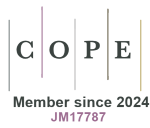The new formulation of the 0,05% sodium hypochlorite electrolytic solution for cutaneous use: reasons and advantages
DOI:
https://doi.org/10.33393/ao.2021.2221Keywords:
Antiseptics, Efficacy, Skin lesions, Sodium hypochlorite, TolerabilityAbstract
Superinfection of skin lesions is quite common, and often delays wound recovery. Infection control plays therefore a key role in the management of skin lesions, requiring the use of specific antimicrobials. Among available agents, topic antiseptic drugs are currently recommended as a first-choice option, to be preferred to antibiotics, given the growing resistance to these drugs. Compared to antibiotics, antiseptic drugs have a wider spectrum of action, including bacteria, fungi, virus, protozoa, and prions. The ideal antiseptic for the management of an infected skin lesion is expected to be both highly effective and well tolerated, in order to promote the physiologic process of tissue restoration. Among available antiseptics, the 0,05% sodium hypochlorite electrolytic solution meets these criteria: the product proved to be effective in vitro and in animal experimental models against a wide range of microorganisms, besides exerting an anti-inflammatory action in the absence of any irritating, cytotoxic or carcinogenic adverse effect, and being useful in biofilm removal. Similarly, in several clinical trials, the 0,05% sodium hypochlorite electrolytic solution was demonstrated to be very effective and safe in the management of infected skin wounds: based on these results, this product should be strongly considered among the first-choice options for the disinfection of skin wounds. The new formulation, developed according to the latest reference standards for wound healing and in agreement with current guidelines, is qualitatively improved, with an expected positive impact in every field of clinical application and a subsequent benefit for treated patients.
References
- Lio PA, Kaye ET. Topical antibacterial agents. Infect Dis Clin North Am. 2009;23(4):945-963, ix. https://doi.org/10.1016/j.idc.2009.06.006 PMID:19909892
- Gottrup F, Apelqvist J, Bjarnsholt T, et al. EWMA document: antimicrobials and non-healing wounds. Evidence, controversies and suggestions. J Wound Care. 2013;22(5)(suppl):S1-S89. https://doi.org/10.12968/jowc.2013.22.Sup5.S1 PMID:24645204
- Lipsky BA, Hoey C. Topical antimicrobial therapy for treating chronic wounds. Clin Infect Dis. 2009;49(10):1541-1549. https://doi.org/10.1086/644732 PMID:19842981
- L’uso degli antibiotici in Italia. Rapporto Nazionale Anno 2019. https://www.aifa.gov.it/documents/20142/1283180/Rapporto_Antibiotici_2019.pdf/0b3d4536-8aa7-e59c-a0a5-add457abe48d
- Lipsky BA, Dryden M, Gottrup F, et al. Antimicrobial stewardship in wound care: a Position Paper from the British Society for Antimicrobial Chemotherapy and European Wound Management Association. J Antimicrob Chemother. 2016;71(11):3026-3035. https://doi.org/10.1093/jac/dkw287 PMID:27494918
- Punjataewakupt A, Napavichayanun S, Aramwit P. The downside of antimicrobial agents for wound healing. Eur J Clin Microbiol Infect Dis. 2019;38(1):39-54. https://doi.org/10.1007/s10096-018-3393-5 PMID:30291466
- Williamson DA, Carter GP, Howden BP. Current and emerging topical antibacterials and antiseptics: agents, action, and resistance patterns. Clin Microbiol Rev. 2017;30(3):827-860. https://doi.org/10.1128/CMR.00112-16 PMID:28592405
- Atiyeh BS, Dibo SA, Hayek SN. Wound cleansing, topical antiseptics and wound healing. Int Wound J. 2009;6(6):420-430. https://doi.org/10.1111/j.1742-481X.2009.00639.x PMID:20051094
- Guest JF, Ayoub N, McIlwraith T, et al. Health economic burden that wounds impose on the National Health Service in the UK. BMJ Open. 2015;5(12):e009283. https://doi.org/10.1136/bmjopen-2015-009283 PMID:26644123
- Davies CE, Hill KE, Newcombe RG, et al. A prospective study of the microbiology of chronic venous leg ulcers to reevaluate the clinical predictive value of tissue biopsies and swabs. Wound Repair Regen. 2007;15(1):17-22. https://doi.org/10.1111/j.1524-475X.2006.00180.xPMID:17244315
- Sen CK, Gordillo GM, Roy S, et al. Human skin wounds: a major and snowballing threat to public health and the economy. Wound Repair Regen. 2009;17(6):763-771. https://doi.org/10.1111/j.1524-475X.2009.00543.x PMID:19903300
- Scalise A, Torresetti M. Ruolo della soluzione elettrolitica di ipoclorito di sodio 0,05% nel moderno approccio alla gestione delle lesioni cutanee. Medicinae Doctor. 2/2017. https://woundcase.com/wp-content/uploads/2019/04/Scalise_2017.pdf
- Murphy C, Atkin L, Swanson T, et al. Defying hard-to-heal wounds with an early antibiofilm intervention strategy: wound hygiene. J Wound Care. 2020;29(Sup3b)(suppl 3b):S1-S26. https://doi.org/10.12968/jowc.2020.29.Sup3b.S1 PMID:32160083
- Roberts CD, Leaper DJ, Assadian O. The role of topical antiseptic agents within antimicrobial stewardship strategies for prevention and treatment of surgical site and chronic open wound infection. Adv Wound Care (New Rochelle). 2017;6(2):63-71. https://doi.org/10.1089/wound.2016.0701 PMID:28224049
- Cutting KF, White RJ. Criteria for identifying wound infection—revisited. Ostomy Wound Manage. 2005;51(1):28-34. PMID:15695833
- Gardner SE, Frantz RA, Doebbeling BN. The validity of the clinical signs and symptoms used to identify localized chronic wound infection. Wound Repair Regen. 2001;9(3):178-186. https://doi.org/10.1046/j.1524-475x.2001.00178.x PMID:11472613
- Kramer A, Dissemond J, Kim S, et al. Consensus on wound antisepsis: update 2018. Skin Pharmacol Physiol. 2018;31(1):28-58. https://doi.org/10.1159/000481545 PMID:29262416
- White RJ, Cutting KF. Critical colonization—the concept under scrutiny. Ostomy Wound Manage. 2006;52(11):50-56. PMID:17146118
- James GA, Swogger E, Wolcott R, et al. Biofilms in chronic wounds. Wound Repair Regen. 2008;16(1):37-44. https://doi.org/10.1111/j.1524-475X.2007.00321.x PMID:18086294
- Scalise A, Bianchi A, Tartaglione C, et al. Microenvironment and microbiology of skin wounds: the role of bacterial biofilms and related factors. Semin Vasc Surg. 2015;28(3-4):151-159. https://doi.org/10.1053/j.semvascsurg.2016.01.003 PMID:27113281
- Malone M, Bjarnsholt T, McBain AJ, et al. The prevalence of biofilms in chronic wounds: a systematic review and meta-analysis of published data. J Wound Care. 2017;26(1):20-25. https://doi.org/10.12968/jowc.2017.26.1.20 PMID:28103163
- Cooke J. When antibiotics can be avoided in skin inflammation and bacterial colonization: a review of topical treatments. Curr Opin Infect Dis. 2014;27(2):125-129. https://doi.org/10.1097/QCO.0000000000000044 PMID:24514163
- Drosou A, Falabella A, Kirsner RS. Antiseptics on wounds: an area of controversy. Wounds. 2003;15(5):149-166. https://miami.pure.elsevier.com/en/publications/antiseptics-on-wounds-an-area-of-controversy
- Finzi G, Aparo UL, Benvenuto A, et al. ANMDO. Linee guida per il corretto utilizzo degli antisettici-disinfettanti. Edicom 2009. https://www.anmdo.org/wp-content/uploads/2016/10/Linee-guida-per-il-corretto-utilizzo-degli-antisettici---disinfettanti.pdf
- McDonnell G, Russell AD. Antiseptics and disinfectants: activity, action, and resistance. Clin Microbiol Rev. 1999;12(1):147-179. https://doi.org/10.1128/CMR.12.1.147 PMID:9880479
- Bloomfield SF. Chlorine and iodine formulations. In: Ascenzi JM, ed. Handbook of disinfectants and antiseptics. New York, N.Y.: Marcel Dekker, Inc; 1996:133-158.
- Dychdala GR. Chlorine and chlorine compounds. In: Block SS, ed. Disinfection, sterilization, and preservation. 4th ed. Philadelphia, Pa: Lea & Febiger; 1991:131-151.
- Bottos S, Tasinato R, Silvestrini S. Wound Care. Un moderno approccio alla gestione delle lesioni cutanee. Quaderno di ReadFiles n. 4 Dic 2019. Supplemento n. 1. https://www.readfiles.it/download/Quaderno2020/01.pdf
- Santo G, D’atanasio N, Capezzone de Joannon A, et al. Valutazione della attività e tossicità di una soluzione di ipoclorito di sodio elettrolitico allo 0,05% nel processo di riparazione tissutale. Gazz Med Ital - Arch Sci Med. 2012;171(6):795-805. https://www.minervamedica.it/it/riviste/gazzetta-medica-italiana/articolo.php?cod=R22Y2012N06A0795
- Piacenza G, Riccola S, Contos N. Proprietà antimicrobiche e cliniche di un antisettico a base di ipoclorito di sodio elettrolitico tamponato. Acta Toxicol Ther. 1998;19:1-14.
- Masina M, Fini R, Mazza C, Lannichella A. Effetti della modalità di applicazione sull’efficacia antimicrobica in vivo di una soluzione di antisettico. Acta Vulnologica 2003;1(0):19-24. https://www.minervamedica.it/it/riviste/acta-vulnologica/articolo.php?cod=R45Y2003N00A0019
- Di Vita F, Toro A, Ricotta A, Politi A. Efficacy of 0.05% sodium hypochlorite isotonic solution versus 10% povidone-iodine in postoperative wound leaning and disinfection. Acta Vulnologica 2011;9(3):161-167.
- Landi F, Ortolani E, Martone AM, Bernabei R. Il controllo delle infezioni nelle ulcere da pressione: efficacia dell’ipoclorito di sodio elettrolitico allo 0,05%. I luoghi della cura. L’angolo dell’esperto. Anno XI, n. 1, 2013. https://www.luoghicura.it/operatori/2013/03/il-controllo-delle-infezioni-nelle-ulcere-da-pressione-efficacia-dellipoclorito-di-sodio-elettrolitico-allo-0-05/
- Cassino R, Ippolito AM. Chloroxidating solution vs. superoxide solution: a comparison in wound cleansing. Acta Vulnologica 2012;10(3):143-152. https://www.minervamedica.it/en/journals/acta-vulnologica/article.php?cod=R45Y2012N03A0143
- Aliquò MS, Monge L, Romagnoli F, Tasinato R. Trattamento delle ulcere croniche difficili: il ruolo centrale della preparazione del letto della ferita. AboutOpen. 2017;3(1):43-62. https://doi.org/10.19156/abtpn.2017.0019









